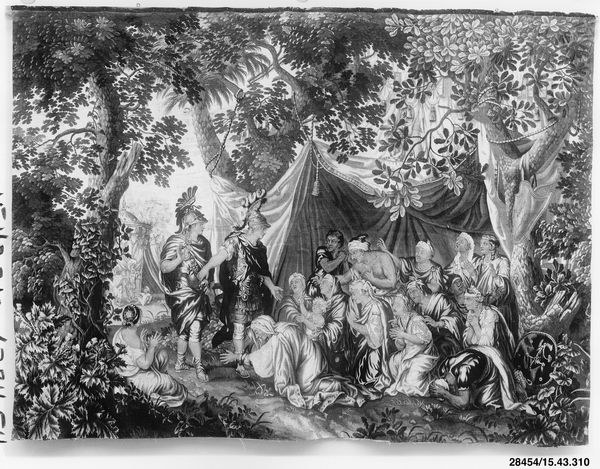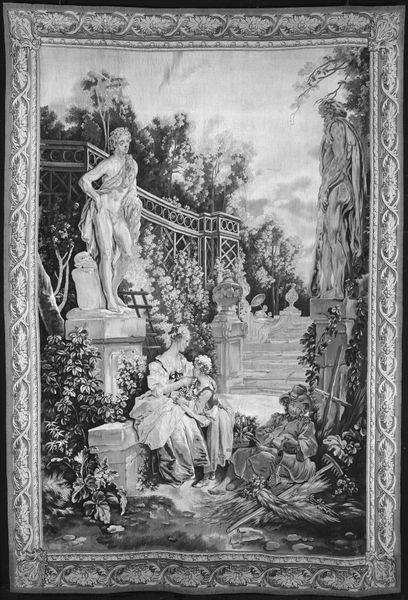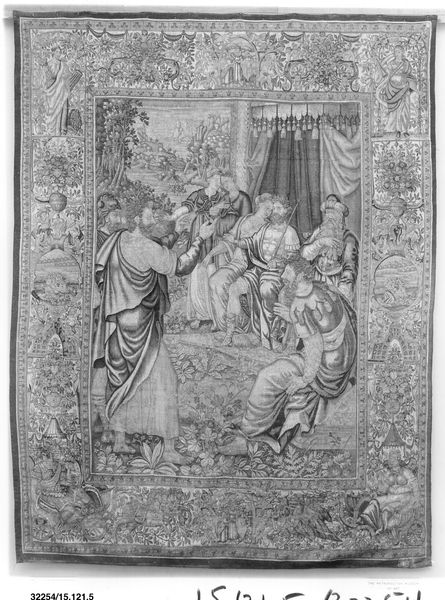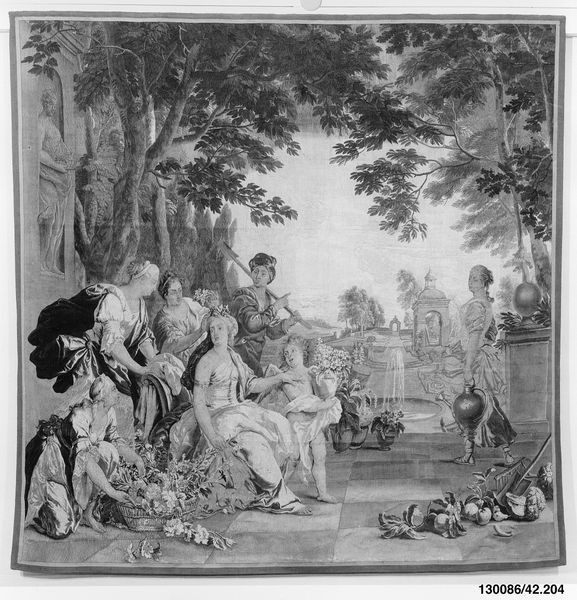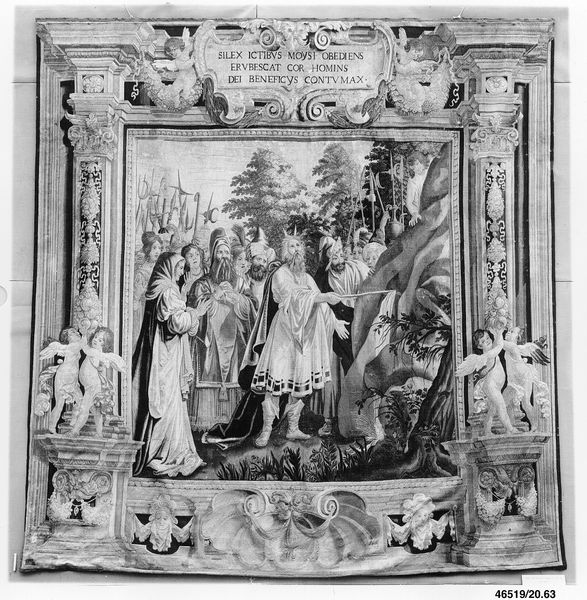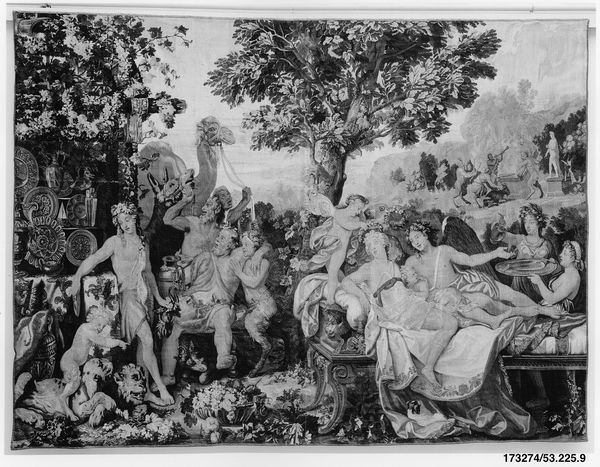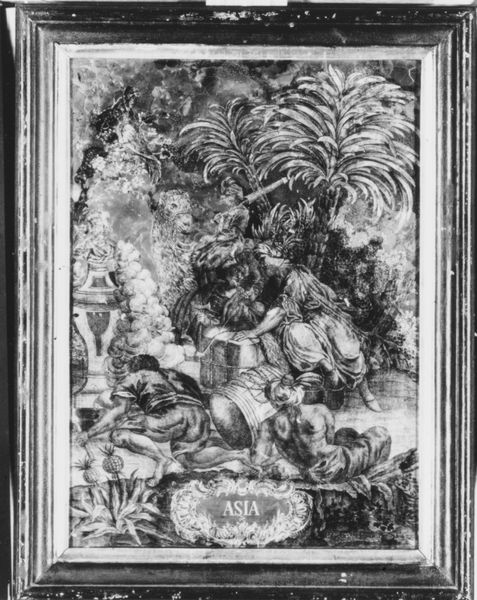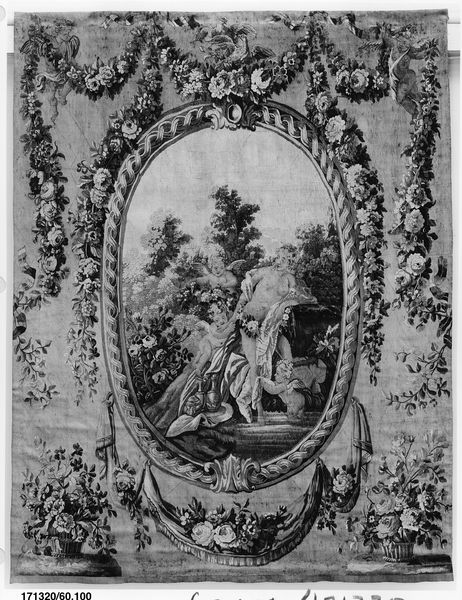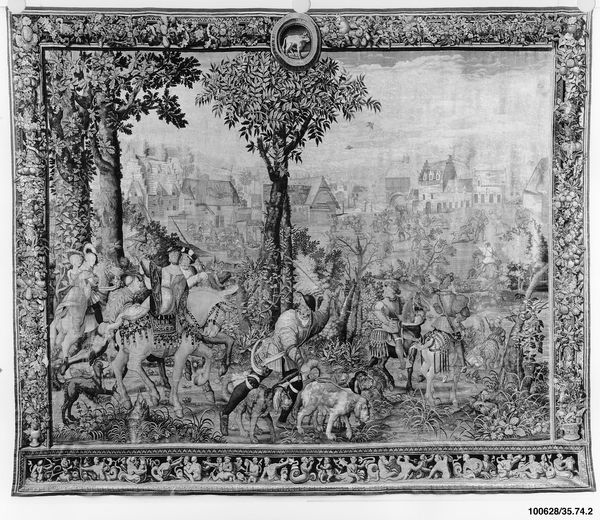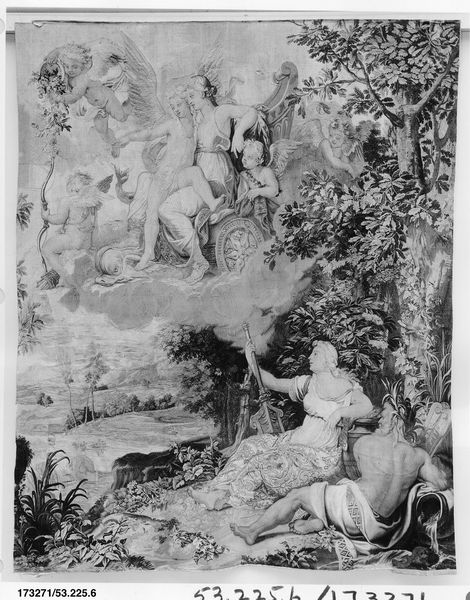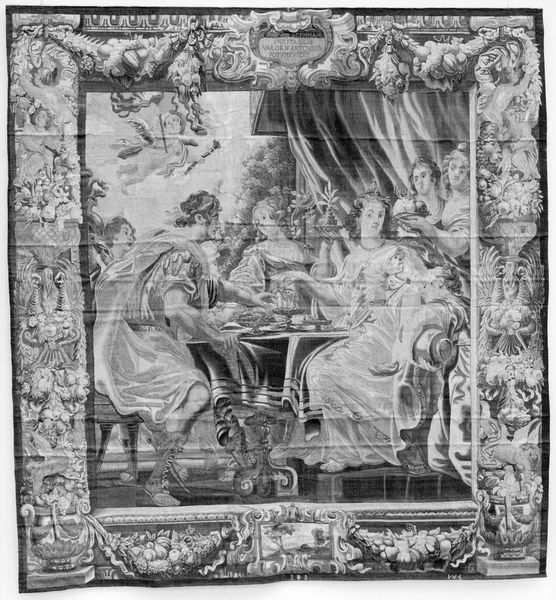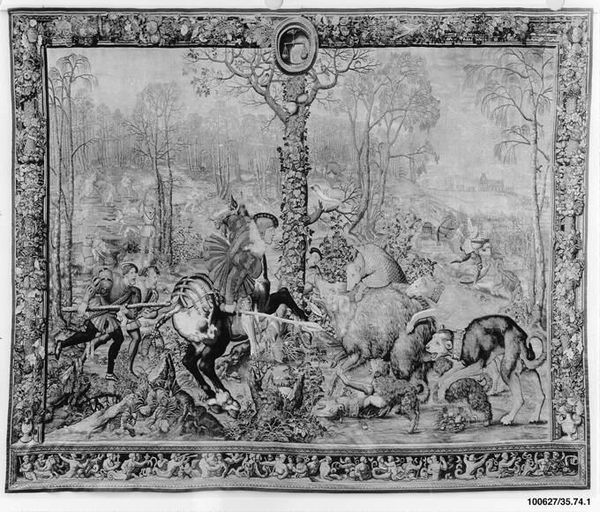
Autumn from a set of the Four Seasons 1690 - 1720
0:00
0:00
textile
#
allegory
#
baroque
#
landscape
#
textile
#
figuration
#
decorative-art
Dimensions: H. 127 x W. 169 inches (322.6 x 429.3 cm)
Copyright: Public Domain
Curator: Here we have "Autumn," one in a set of tapestries representing the Four Seasons. Created between 1690 and 1720, this piece, attributed to Lodewijk van Schoor, invites us into the luxurious world of the late Baroque. Editor: My first impression is one of opulence but also of...overripeness? The fruits seem almost too plentiful, threatening to spill out of the scene. Curator: Precisely! That abundance is deliberate. As a depiction of Autumn, this textile utilizes allegory. Each figure symbolizes elements associated with the harvest season. What social functions might these decorative tapestries perform? Editor: Considering the period, surely this speaks to aristocratic power. A statement about their ability to reap the rewards of land and labor, perhaps? Even a display of dynastic ambitions through an association with the natural world. Curator: Indeed. The landscape itself reflects controlled nature—organized and cultivated, echoing the ideals of the ruling elite. Note the background. Do you see how everyday citizens are placed far into the depths, outside of the foreground featuring this idealized group? What sort of class relationships does this reveal? Editor: It certainly spotlights those inequalities, doesn't it? Those are peasants toiling, providing the very resources upon which this central figure's comfort depends. Even the 'generosity' of Autumn is predicated on this silent exploitation. Curator: The use of textile as a medium is significant as well. Tapestries like these were portable displays of wealth and power. They moved with the elite, reinforcing their status wherever they went. Editor: And it's not a passive scene. The central figure seems to invite you to enjoy the bounty. The abundance hides a harsher reality of societal dependencies and control. Curator: Yes. This tapestry offers a glimpse into a specific social order, visually reinforcing the status quo of the time. Editor: Thinking about the piece now, it makes me question ideas of wealth as purely celebratory. We must confront how such opulence came to be and what systems sustained it.
Comments
No comments
Be the first to comment and join the conversation on the ultimate creative platform.
